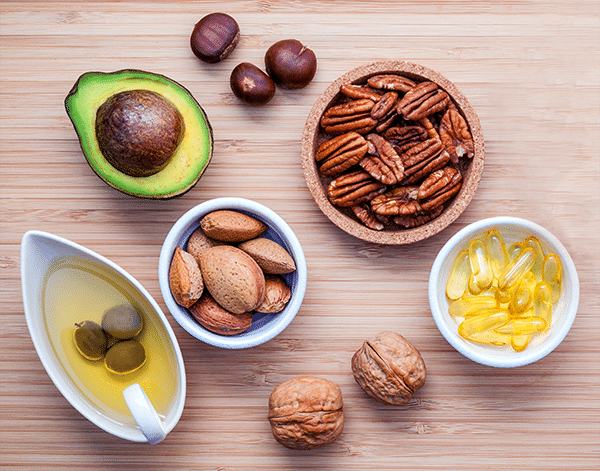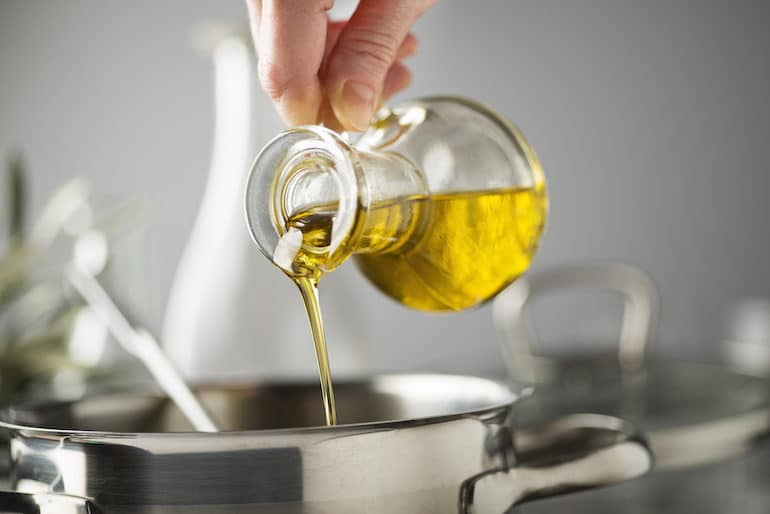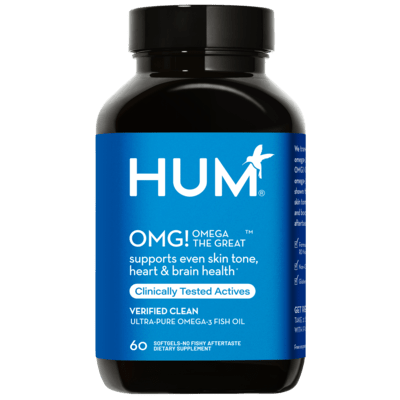THE WELLNEST • Food • Healthy Eating
7 Healthy Fats for Cooking and When To Use Them
By Allie Flinn •
July 29, 2016
News flash: Fat doesn’t make you fat!
However, not all fats are created equal. Some fats are better suited to high-heat cooking, some work best cold, and others should be avoided completely. To help you choose the best fats for cooking, I put on my (virtual) lab coat and got the scientific scoop. Here is the healthy fats list you’ve been waiting for.



What is fat?
Dietary fat is a macronutrient (aka fuel for your body). The two other macronutrients are protein and carbohydrates. You need a large amount of these macronutrients to be at your healthiest. On a biological level, fat is made up of molecules called fatty acids. The way the carbon atoms are arranged within the molecule determines whether the fat is classified as unsaturated or saturated.Why do we need fat?
As a society, we’ve been conditioned to see fat as the villain of the diet world. We’ve been told to choose low-fat or fat-free yogurt over full-fat varieties, opt for skim instead of whole milk, and to cook with margarine. (I know I’ve been guilty of ordering “skinny” vanilla lattes from Starbucks in the past, convinced it was better for me than the whole-milk version.) “What people should know is that fat in the diet doesn’t mean fat on the body! We need fat, especially for weight loss! Fat is satiating and provides satisfaction,” says Alexandra Caspero, MA, RD. “Plus, fat is in every single cell in the body. If you want healthy hair, skin, and anything else, you need fat. Fat also helps you absorb certain vitamins (A, D, E, K) that are essential for blood clotting, muscle movement, and inflammation.” In other words, fat is crucial to your health.What are the different types of fats?
There are two main types of fat: unsaturated fat and saturated fat. The difference lies in those very important carbon bonds we discussed earlier.Unsaturated Fat
Chemically speaking, unsaturated fat has at least one double bond. Double bonds cause kinks in the chains, which make it hard for them to fit together. Because they don’t fit together nicely, fats with many of these chains will typically have lower melting points and will be liquid at room temperature. Unsaturated fats also contain essential fatty acids like omega-3 and omega-6. They’re called essential because our bodies can’t make them. Thus, we have to get them through our diets.Saturated Fat
By contrast, saturated fat doesn’t have double bonds in the carbon chain and is solid at room temperature. Butter and lard, for instance, are both examples of saturated fat. Typically, unsaturated fats are considered healthy and saturated fats are considered unhealthy. However, these designations aren’t set in stone.Trans Fat
One fat that’s 100% bad for you? Trans fat. Trans fat is created by a chemical process that turns unsaturated fat into saturated fat, which is done to elongate the shelf life of food. “These industrial fats are the worst; I recommend people stay away from at all costs,” says Caspero. To do so, check the ingredients on the package. If it reads “partially hydrogenated fat” anywhere on it, stay far, far away—even if the label says it doesn’t contain trans fat. “Labeling laws allow small amounts of trans fats to get in, but since the threshold for health and safety is so low (two grams per day), I recommend avoiding them entirely,” she explains. Here’s why: “Trans fats create inflammation, which is linked to heart disease, stroke, and diabetes.” They also contribute to insulin resistance, which ups your risk of developing type-2 diabetes.What makes a fat healthy for cooking?
To find the best healthy fats for cooking consider two key factors: smoke point and stability.Smoke Point
First, an oil’s smoke point determines how well the oil handles the heat when you cook with it. A general rule of thumb is that oils with high smoke points are best for cooking. In turn, oils with low smoke points should be used for cold dishes. Makes sense, right? Well, it doesn’t exactly tell the whole story.Stability
In addition to having a high smoke point, the best oils for cooking are also stable at high temperatures, meaning they don’t oxidize. When oils oxidize, their molecular structure changes, they become rancid, and they form toxic compounds linked to degenerative illnesses like heart disease and cancer. Saturated fats are much more stable than unsaturated fats. However, they’ve been characterized as the bad guys because they were thought to increase the risk of heart disease. Many recent studies have suggested that there’s no link between saturated fat consumption and an increased risk of heart or cardiovascular disease.
7 Healthy Fats for cooking & When to Use Them
1. Coconut Oil
Coconut oil is considered a saturated fat, which would have earned it a place on the healthy no-no list a couple of years ago. Now, saturated fats are a bit of a gray area. Coconut oil has a high smoke point and is very stable at high temperatures. As a result, Caspero recommends coconut oil for cooking. Plus, it contains immune system-boosting lauric acid. Use coconut oil for: cooking and baking.2. Avocado Oil
Avocado oil is a type of unsaturated fat, known as monounsaturated. Its chains have only one double bond (or kink), and it’s quite stable at high heats. Because it’s a liquid at room temperature, it’s also easy to incorporate into salad dressing or other cold dishes. In fact, one study at Ohio State University found that avocado oil can help you absorb beta-carotene—a vitamin A-rich pigment found in fruits and veggies—more efficiently. You’ve got to be avo-kidding me (#sorrynotsorry)! Use avocado oil for: anything.3. Olive Oil
There’s a lot of debate about olive oil. On one hand, it’s full of monounsaturated fats that can help reduce bad cholesterol. On the other, extra-virgin olive oil has a relatively low smoke point and isn’t as stable against heat as a saturated fat. “All fats have a smoke point. Rancidity is a big deal when it comes to fat and health,” says Caspero. “So even a healthy fat like olive oil can become inflammatory when it becomes oxidized. Oxidation occurs when oils are exposed to too much light and heat and are pushed past their smoke points. You should never use extra-virgin olive oil for cooking!” If you do choose to cook with olive oil, make sure to use it on a low heat. “Keep your olive oil jars away from the stove,” adds Caspero. “Ideally, you should buy them in dark glass bottles or tins to prevent too much light exposure.” Use olive oil for: dressings, drizzles, and low-heat cooking.4. Canola Oil
“Canola oil is technically a healthy fat, but there’s more to it than that,” says Caspero. It’s high in omega-6 fatty acids, which is good… to an extent. Our bodies can’t produce omega-3, 6, or 9, so we have to get them from our diets. But the standard American diet is already too full of omega-6s, which throws off the balance. “So instead of omega-6 being a healthy fat, it becomes pro-inflammatory because we’re taking in too much,” she explains. “Canola is also a GMO oil, which doesn’t necessarily affect the fat content or the health, but it gets a bad reputation from that as well.” Use canola oil for: cooking and salad dressings, in moderation.5. Sesame Oil
Sesame oil is the cooking oil you never knew you needed. It has a high smoke point and can hold its own against heat. But what’s really remarkable is that it was found to decrease blood pressure and weight in hypertensive patients, and increase levels of vitamins C and E, along with potassium. It’s also rich in antioxidants. Use sesame oil for: frying, cooking, and sauces.6. Walnut Oil
Walnut oil contains a balance of omega-3 and 6 fatty acids and packs important antioxidants. However, it has a low (like, super low) smoke point, so you shouldn’t use it for cooking. Not only will that cause it to oxidize; heating it will also make it taste bitter. Use walnut oil for: baking and cold sauces.7. Ghee
Ghee’s alter ego is clarified butter (butter that’s had the milk solids removed). Though you probably just heard about it recently, ghee has been used in Indian cooking for centuries. Recent studies done on rats suggest that grass-fed ghee (which has a high concentration of conjugated linoleic acid, an antidiabetic, anticarcinogenic compound) can be used to help treat cardiovascular disease. It has a high smoke point and is stable at high heats. Plus, it’s chock-full of butyrate, which can help decrease inflammation and help digestion. Use ghee for: cooking at both low and high heats.More like this









